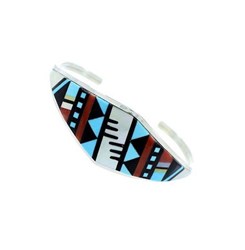New AmericanIndianNativeJewelry.com focuses on significance and popularity of American Indian native jewelry

Source: PRWeb.com
It’s no secret that American Indian native jewelry has captivated audiences for hundreds of years. These works of art have withstood the test of time and continue to be popular today.
Now, a new website is offering the historic background, educational information and stunning photography to highlight the incredible variety and artistry of the hand-crafted jewelry.
“Many buyers experience a palpable attraction to certain pieces of American Indian native jewelry,” according to AmericanIndianNativeJewelry.com spokesperson Fran Blair. “A long jewelry-making tradition by various tribes and the growing popularity of the art form makes this website a valuable source of information for anyone interested in learning about the diverse array of jewelry available today.”
Ms. Blair says, “While it is true that many people associate American Indian native jewelry with the Navajo of the American Southwest, there is a wider tradition of jewelry-making and a great diversity of materials. We will showcase that diversity on our website,” she adds, “so that we can provide an authoritative source for anyone interested in pursuing information about the art form.”
Jewelry-making, she explains, is not limited to the Southwest, and it certainly encompasses more than the silver and turquoise pieces produced there. Many Southwest tribes historically crafted fine jewelry, as did the Pueblo Indians of New Mexico, Plains Indians and Northern tribes as well.
“Because the populations were not isolated, and because trade did occur, just as in other cultures, the lines are sometimes blurred,” she says, “but distinctive styles still exist. There is a recognizable difference between a Hopi turquoise and silver medallion, and a buckle produced by a Zuni artist,” she notes. This is one of the goals of our new website, she says. “We want to explain the differences, highlight the hallmarks, point out the specialties and characterize the expertise of various artists.”
The website also illustrates beadwork and other styles.
American Indian native jewelry making talents are, contrary to some reports, not being lost or diluted in today’s society. In fact, new artists are building on the traditions of their predecessors, reshaping and redefining an art form that has existed for centuries. Even though silverwork may have been introduced to the tribes of the Southwest by Spanish explorers, Native Americans adapted the knowledge and made it very much their own, employing local stones and other materials, using symbols of their own culture, and passing the art to succeeding generations.
“Perhaps,” says Ms. Blair, “one of the explanations for the resurgence of popularity in American Indian native jewelry is a newfound respect for the spirituality and the power of the underlying cultures.”
Additional information can be found at AmericanIndiannativejewelry.com.
